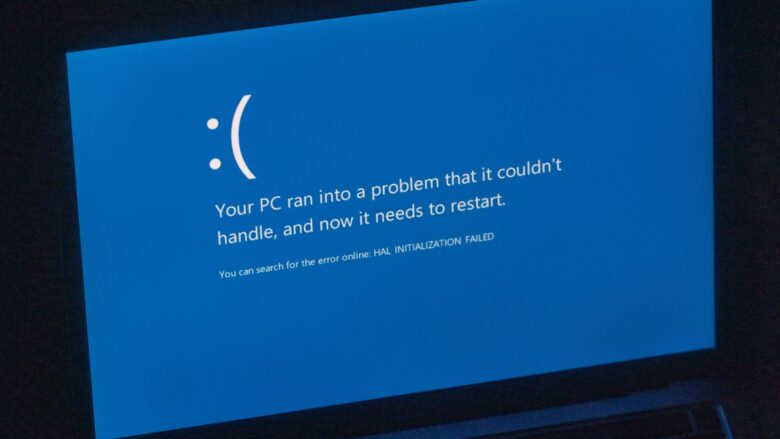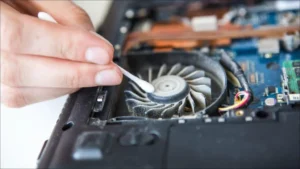To ensure your computer runs safely, reliably, and smoothly, you should install Windows updates. Updates typically fix critical vulnerabilities, add new features, and improve performance. However, many users experience annoying update problems that can cause the installation process to stall or prevent the update from downloading at all. There are many reasons for these errors, including network connection problems, corrupted files, program conflicts, or incorrect system settings. Understanding how to resolve these issues will keep your Windows device up-to-date and running smoothly.
Checking Your Internet Connection Before Updating
A stable network connection is required to download and install Windows updates. Many update problems are caused by slow or unstable network connections, which can stop downloads. If your update continues to fail, first check your network connection. Try restarting your router or switching to a different network to see if that resolves the issue. You can also temporarily disable VPN or proxy settings, as these settings can sometimes interfere with the Windows Update servers. Ensuring a stable network connection allows Windows to communicate with Microsoft servers and complete the update process smoothly.
Freeing Up Disk Space for a Successful Update
Insufficient storage space is another major cause of update problems. Windows Update typically requires several GB of free space to download and install new files. If your storage space is running low, the update process may stop mid-process or fail. To resolve this issue, delete unnecessary files, empty the Recycle Bin, and uninstall programs you no longer need. You can also use the built-in Windows Disk Cleanup tool to remove old system updates and temporary files. Ensuring sufficient free space can not only resolve update problems but also improve overall system performance.
Restart the Windows Update service
Windows Update requires several background services to function properly. If any of these services stop or crash, it can cause the update to fail. Restarting the Windows Update service usually resolves this issue. You can do this by opening the Services program, locating Windows Update, and then restarting it. This can also help restart related services, such as Background Intelligent Transfer Service (BITS) and Encryption Service. This step resets the update system, resolves temporary problems, and restores regular updates.
Using the Windows Update Troubleshooter
Microsoft has a built-in tool to help you troubleshoot update problems. The Windows Update Troubleshooter detects problems on your computer and attempts to fix them. It can repair missing or damaged files, reset update components, and restart faulty services. If you encounter errors while updating, run the troubleshooter first. It’s simple, straightforward to use, and safe. Often, it resolves the problem without requiring any special technical skills.
Cleaning the SoftwareDistribution Folder
Windows Update isn’t always effective because temporary files in the SoftwareDistribution folder can become cluttered. This folder contains the files used to install updates. Cleaning this folder often resolves recurring problems. You can do these tasks by stopping the Windows Update service, deleting the files in the folder, and then resuming the service. Windows will recreate the folder and download new update files. This action removes any corrupted data that might prevent updates from installing correctly and forces your system to restart.
Finding Corrupted System Files
Damaged or missing system files may prevent Windows devices from updating. The System File Checker (SFC) and Deployment Image Servicing and Management (DISM) tools can repair these files and stabilize the system. These built-in tools scan your computer for corrupted files and automatically replace them with the correct ones. This process may take some time, but it is very effective in resolving update problems caused by corrupted files. To keep your system running smoothly and achieve optimal performance, ensure that your system files are in excellent condition.
Temporarily Disabling Antivirus or Firewall Software
Antivirus software and firewalls are essential for your computer’s security, but they can sometimes block Windows updates by blocking connections or modifying system files. Try temporarily disabling your security software during the update installation if you suspect it’s the cause of the problem. Re-enable antivirus protection immediately after the update is complete. This method is particularly useful if a third-party antivirus program is too restrictive, preventing certain Windows components from communicating with the update server.
Performing a Clean Boot to Avoid Conflicts
Sometimes third-party applications and programs that start with Windows can interfere with Windows updates. With a clean boot, Windows starts only the most essential drivers and startup items. These steps can help you determine if background software is causing the problem. After cleaning your computer, try running the update again. If the update is successful, you can re-enable the problematic applications one by one to identify the root cause. This method can help pinpoint the root cause of the problem and ensure that future updates run smoothly.
Manually Resetting Windows Update Components
If other methods fail, manually resetting Windows Update components can resolve most recurring issues. This process involves stopping the update service, renaming the system folder, and restarting the update components. This step may sound complicated, but Microsoft provides clear and safe guidelines for its use. Resetting the components clears all cached data, re-registers the update service, and restores the correct functionality of the update mechanism. After resetting, you can restart your device and try downloading updates again.
Conclusion
Troubleshooting update problems on Windows devices can seem daunting, but in most cases, you can do it in just a few simple steps. Ensuring a stable and reliable network connection, freeing up hard drive space, restarting the service, and deleting corrupted files can all play a significant role. The Windows Update Troubleshooter, SFC, and DISM are built-in tools that can help even tech-savvy users easily resolve issues. Keeping your system up to date and performing regular maintenance helps keep your device secure, fast, and reliable. This process also prevents future update problems.
FAQs
1. Why isn’t Windows Update working?
Windows Update may not work properly if your network connection is slow, you have insufficient disk space, your data is corrupted, or there are issues with third-party software.
2. How do I restart the Windows Update service?
You can open the Services program, right-click Windows Update, and then select Restart to renew the service.
3. Can I delete the SoftwareDistribution folder?
Yes, deleting files in the SoftwareDistribution folder is safe, and deleting corrupted files often resolves update problems.
4. What should I do if the Windows Update troubleshooter doesn’t work?
If the troubleshooter doesn’t work, you can manually reset the update components or use SFC and DISM tools to repair system files.
5. Can antivirus software cause Windows Update to fail?
Yes, antivirus software and firewalls sometimes block updates. You can temporarily disable them during the update process to resolve this issue.




